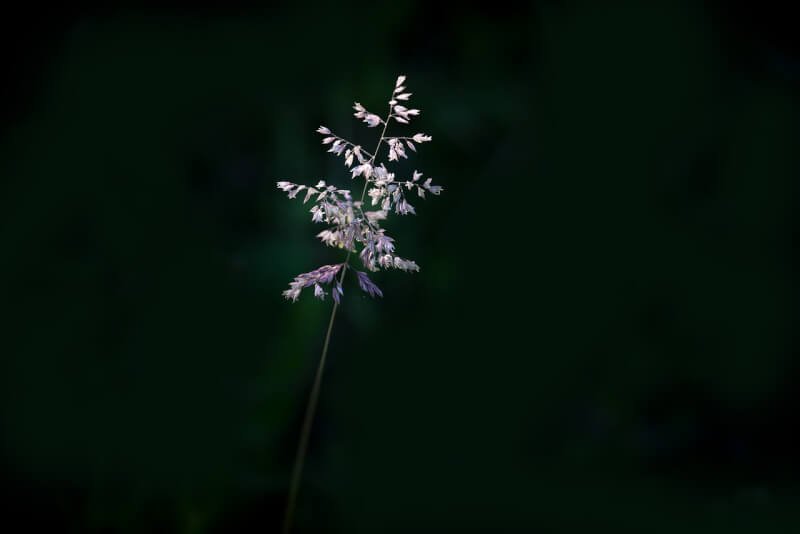In the world of aquarium aesthetics, the concept of negative space has emerged as a powerful tool to maximize visual impact. With its ability to create balance, emphasize the beauty of aquatic life, and evoke a sense of tranquility, creative uses of negative space have revolutionized the way we design aquariums. By strategically incorporating empty spaces and minimalist designs, your aquarium can become a captivating centerpiece that transforms any space into a serene underwater oasis. In this article, we will explore the various ways in which negative space can be effectively utilized to enhance the overall aesthetics of your aquarium and create a visually stunning display that leaves a lasting impression.

Understanding Negative Space in Aquarium Aesthetics
Negative space, also known as empty or white space, refers to the areas in a design or composition that are left intentionally blank. In the context of aquarium aesthetics, negative space can play a crucial role in enhancing the overall visual impact and creating a sense of balance and harmony in the aquatic environment. It is the intentional absence of elements that allows the eye to focus on the important aspects of the aquarium, such as fish, plants, and decor.
Defining Negative Space
Negative space can be defined as the areas within an aquarium that are devoid of any physical elements or objects. It can include the empty spaces between plants, rocks, or other decorations, as well as the space surrounding the aquatic life. By strategically utilizing negative space, aquarium enthusiasts can create an aesthetically pleasing and visually engaging environment that showcases the beauty of the aquatic world.
Importance of Negative Space in Aquarium Design
Negative space plays a vital role in aquarium design by enhancing the overall aesthetics and visual impact. It helps create a sense of balance, harmony, and depth in the aquatic environment. Without the presence of negative space, the aquarium can feel cluttered and overwhelming, diminishing the visual appeal. By deliberately creating empty spaces, the elements within the aquarium can stand out and become the focal points of attention.
Manipulating Negative Space in Aquarium Layout
Creating the Illusion of Depth
One of the key ways to manipulate negative space in aquarium layout is by creating the illusion of depth. By placing taller plants and decorations towards the back of the aquarium and gradually reducing their size towards the front, you can create a sense of perspective that mimics the natural environment. This technique allows the viewer’s eye to perceive the depth of the aquarium, making it visually more appealing.
Using Contrasting Colors and Textures
Another effective way to manipulate negative space is by using contrasting colors and textures. By incorporating a variety of plants, rocks, and decorations with different hues and textures, you can create a visually captivating contrast against the empty spaces. The interplay between the positive elements and the negative space can create a dynamic and visually appealing composition within the aquarium.
Emphasizing Focal Points with Negative Space
Negative space can be used strategically to emphasize focal points within the aquarium. By placing a prominent decoration or a visually striking fish in a relatively empty area, you can draw the viewer’s attention to that specific element. This not only enhances the visual appeal but also creates a sense of visual hierarchy, guiding the viewer’s gaze towards the key features of the aquarium.

Utilizing Negative Space for Aquatic Life Display
Showcasing Individual Species with Negative Space
Negative space can be employed to highlight specific species of fish or aquatic life within the aquarium. By creating empty spaces around these species, you not only emphasize their presence but also provide them with a sense of distinctiveness. This technique allows aquarium enthusiasts to showcase and appreciate the beauty of individual species, enhancing the overall aesthetic value of the tank.
Creating Natural Habitats with Negative Space
Negative space can also be utilized to create natural habitats within the aquarium. By arranging decorations, plants, and substrate in a way that mimics the natural environment of the fish species, you can provide them with a more comfortable and visually appealing living space. The careful use of negative space can help replicate the natural habitat of the fish, promoting their well-being and creating a visually captivating aquatic setup.
Incorporating Artistic Elements through Negative Space
Sculptural Negative Space Installations
Negative space can be transformed into a medium for artistic expression within the aquarium. By incorporating sculptural installations that utilize negative space, you can create a unique and visually stunning aquarium design. These installations can take the form of abstract shapes, arches, or even replicas of underwater structures, adding an artistic touch to the overall aesthetic of the aquarium.
Using Negative Space for Artistic Aquascaping
Aquascaping, the art of arranging plants, rocks, and other elements within an aquarium, can greatly benefit from the use of negative space. By strategically creating empty spaces between plants and rocks, you can achieve a more artistic and visually appealing aquascape. Negative space can be used to create pathways, valleys, and hills, resulting in a natural and harmonious arrangement that captures the beauty of the underwater world.

Utilizing Negative Space in Aquarium Lighting
Enhancing Visual Impact with Lighting Techniques
Negative space can be effectively utilized to enhance the visual impact of aquarium lighting. By placing light sources strategically and allowing for areas of darkness, you can create a captivating interplay of light and shadow. This technique not only adds depth and dimension to the aquarium but also highlights the textures and contours of the aquatic elements, making the overall aesthetic more visually intriguing.
Creating Shadows and Highlights with Negative Space
Negative space in aquariums can also be used to create shadows and highlights, adding a dramatic flair to the overall design. By positioning light sources at certain angles, you can cast shadows that emphasize the three-dimensional aspects of the aquarium. This interplay of light and shadow can create a visually dynamic environment that enhances the overall aesthetic appeal.
Optimizing Negative Space for Visual Balance and Harmony
Striking a Balance between Positive and Negative Space
Achieving a balance between positive and negative space is essential for a visually pleasing aquarium. By ensuring that the empty spaces are proportionate to the elements within the tank, you can create a sense of equilibrium and harmony. Too much negative space can make the aquarium feel empty and sterile, while too little can result in a cluttered and chaotic appearance. Striking the right balance is key to maximizing the visual impact of negative space.
Harmonizing Negative Space with Surrounding Décor
It is crucial to harmonize the negative space with the surrounding décor in order to create a cohesive and visually appealing aquarium design. The empty spaces should complement and enhance the overall aesthetic theme of the tank. By selecting decorations, plants, and other elements that work harmoniously with the negative space, you can create a unified and visually balanced environment that is pleasing to the eye.

Utilizing Negative Space for Vertical Aquarium Designs
Creating Vertical Layers with Negative Space
Vertical aquarium designs can greatly benefit from the utilization of negative space. By incorporating tall plants, rocks, or other features that extend vertically, you can create distinct layers within the aquarium. These layers, when combined with appropriate negative space, provide a sense of depth and dimension that is visually captivating. The vertical arrangement also allows for better utilization of limited horizontal space, making it an ideal choice for smaller aquariums.
Adding Depth and Dimension to Vertical Aquariums
Negative space can also add depth and dimension to vertical aquarium designs. By creating empty spaces, particularly towards the back of the tank, you can create an illusion of distance and perspective. This tricks the viewer’s eye into perceiving the aquarium as larger and more expansive, enhancing the overall visual experience. The clever use of negative space can transform a vertical aquarium into a captivating and immersive underwater world.
Creating Unique Themes with Negative Space
Utilizing Negative Space for Underwater Landscapes
Negative space can be a powerful tool in creating unique underwater landscapes within the aquarium. By arranging plants, rocks, and other elements in a way that mimics natural landforms such as hills, valleys, and caves, you can transform the aquarium into a mesmerizing landscape. The judicious use of negative space helps in defining and highlighting these landforms, creating a visually captivating and immersive aquatic environment.
Designing Themed Aquariums with Negative Space
Negative space can also be utilized to design themed aquariums that reflect specific concepts or ideas. Whether it’s a tropical paradise, a sunken ship, or a serene Zen garden, negative space can help bring these themes to life. By incorporating appropriate decorations, plants, and other elements, along with strategically placed empty spaces, you can create a visually cohesive and engaging aquarium that transports viewers to another world.

Incorporating Negative Space in Minimalistic Aquarium Designs
Simplicity and Elegance through Negative Space
Minimalistic aquarium designs often rely on the effective use of negative space to achieve a sense of simplicity and elegance. By intentionally keeping the number of elements to a minimum and creating ample empty spaces, you can create a clean and uncluttered aesthetic. The absence of excessive ornamentation allows the viewer’s attention to be focused on the few key elements, resulting in a zen-like ambiance that promotes a sense of tranquility and beauty.
Achieving Zen-like Aesthetics
The use of negative space in minimalistic designs can contribute to achieving a Zen-like aesthetic in aquariums. By eliminating unnecessary elements and utilizing negative space to create a sense of calm and tranquility, you can evoke a feeling of harmony and balance. This deliberate simplicity in design promotes a sense of serenity in both the aquarium and the viewer, creating an overall aesthetic that is visually pleasing and emotionally soothing.
Maintaining Aesthetics while Prioritizing Fish Welfare
Ensuring Sufficient Swim Space for Fish
While aesthetics are important in aquarium design, the welfare of the fish should always be the top priority. When utilizing negative space, it is crucial to ensure that the fish have sufficient space to swim and move around comfortably. Overcrowding the aquarium with excessive decorations or neglecting to provide open areas for swimming can lead to stress and compromised well-being for the fish. Finding the right balance between aesthetics and fish welfare is essential for a successful aquarium setup.
Balancing Aesthetics with Fish Comfort
Aquarium enthusiasts must strike a balance between aesthetics and fish comfort when utilizing negative space. It is important to consider the natural behavior and habitat requirements of the fish when designing the aquarium. By providing ample hiding spots, resting areas, and open swimming spaces within the negative space, you can create an environment that not only looks visually appealing but also promotes the well-being and natural behavior of the fish. Prioritizing fish comfort ensures a harmonious and ethically responsible aquarium setup.
In conclusion, negative space is a powerful tool in aquarium aesthetics that allows for the maximization of visual impact and the creation of balance and harmony. By manipulating negative space, aquarium enthusiasts can enhance the overall design, showcase individual species, incorporate artistic elements, optimize lighting, create unique themes, and maintain aesthetics while prioritizing fish welfare. The strategic use of negative space opens up endless possibilities for creativity and allows for the creation of captivating and visually appealing aquarium setups.

